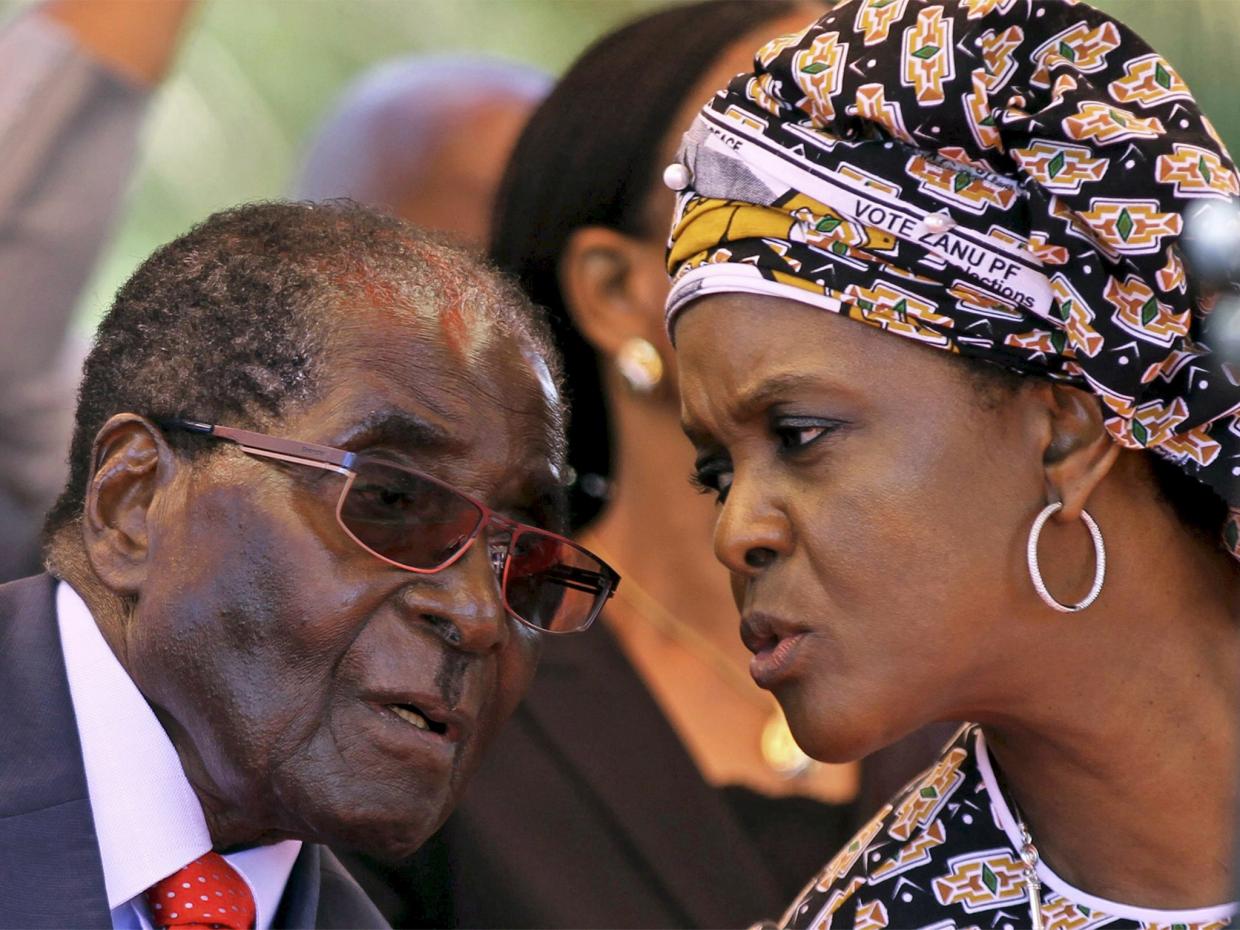by MAHMOOD MAMDANI
 Zimbabwe’s President Robert Mugabe before an address to the Politburo in February 2016, in Harare, with his wife Grace. On 21 November 2017, he was forced to resign from his post PHOTO/Reuters/Independent
Zimbabwe’s President Robert Mugabe before an address to the Politburo in February 2016, in Harare, with his wife Grace. On 21 November 2017, he was forced to resign from his post PHOTO/Reuters/Independent
.
It is hard to think of a figure more reviled in the West than Robert Mugabe. Liberal and conservative commentators alike portray him as a brutal dictator, and blame him for Zimbabwe’s descent into hyperinflation and poverty. The seizure of white-owned farms by his black supporters has been depicted as a form of thuggery, and as a cause of the country’s declining production, as if these lands were doomed by black ownership. Sanctions have been imposed, and opposition groups funded with the explicit aim of unseating him.
There is no denying Mugabe’s authoritarianism, or his willingness to tolerate and even encourage the violent behaviour of his supporters. His policies have helped lay waste the country’s economy, though sanctions have played no small part, while his refusal to share power with the country’s growing opposition movement, much of it based in the trade unions, has led to a bitter impasse. This view of Zimbabwe’s crisis can be found everywhere, from the Economist and the Financial Times to the Guardian and the New Statesman, but it gives us little sense of how Mugabe has managed to survive. For he has ruled not only by coercion but by consent, and his land reform measures, however harsh, have won him considerable popularity, not just in Zimbabwe but throughout southern Africa. In any case, the preoccupation with his character does little to illuminate the socio-historical issues involved.
Many have compared Mugabe to Idi Amin and the land expropriation in Zimbabwe to the Asian expulsion in Uganda. The comparison isn’t entirely off the mark. I was one of the 70,000 people of South Asian descent booted out by Idi Amin in 1972; I returned to Uganda in 1979. My abiding recollection of my first few months back is that no one I met opposed Amin’s expulsion of ‘Asians’. Most merely said: ‘It was bad the way he did it.’ The same is likely to be said of the land transfers in Zimbabwe.
What distinguishes Mugabe and Amin from other authoritarian rulers is not their demagoguery but the fact that they projected themselves as champions of mass justice and successfully rallied those to whom justice had been denied by the colonial system. Not surprisingly, the justice dispensed by these demagogues mirrored the racialised injustice of the colonial system. In 1979 I began to realise that whatever they made of Amin’s brutality, the Ugandan people experienced the Asian expulsion of 1972 – and not the formal handover in 1962 – as the dawn of true independence. The people of Zimbabwe are likely to remember 2000-3 as the end of the settler colonial era. Any assessment of contemporary Zimbabwe needs to begin with this sobering fact.
Though widespread grievance over the theft of land – a process begun in 1889 and completed in the 1950s – fuelled the guerrilla struggle against the regime of Ian Smith, whose Rhodesian Front opposed black majority rule, the matter was never properly addressed when Britain came back into the picture to effect a constitutional transition to independence under majority rule. Southern Rhodesia became Zimbabwe in 1980, but the social realities of the newly independent state remained embedded in an earlier historical period: some six thousand white farmers owned 15.5 million hectares of prime land, 39 per cent of the land in the country, while about 4.5 million farmers (a million households) in ‘communal areas’ were left to subsist on 16.4 million hectares of the most arid land, to which they’d been removed or confined by a century of colonial rule. In the middle were 8500 small-scale black farmers on about 1.4 million hectares of land.
London Review of Books for more
via 3 Quarks Daily